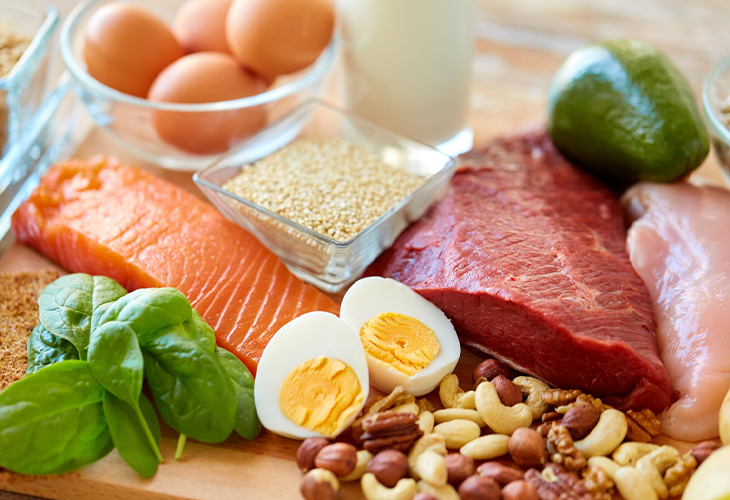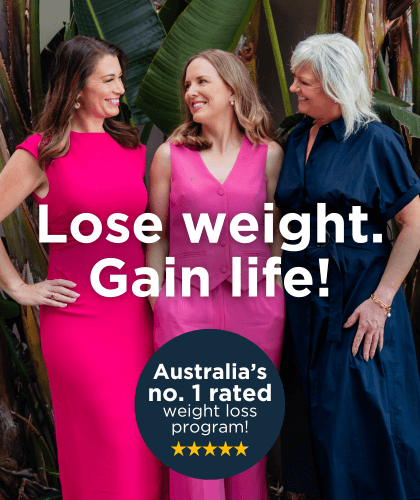In with the good protein, out with the bad

The big picture for Australian protein intake does not look good - we're getting far too much of our protein from junk food and processed food.
Swapping less healthy protein sources for healthy protein sources can improve your diet considerably. The problem with less healthy protein sources isn't the protein itself but the fact that it comes combined with other less desirable nutrients like saturated fat and salt.
Unhealthy protein sources also tend to be higher in kilojoules (calories) than the better choices which means you are more likely to gain weight if you consume too much.
“Everyone’s protein needs are different, and not all foods that contain protein are good for you,” says CSIRO Principal Research Scientist Professor Manny Noakes.
“As science advances, we are seeing the benefits of taking a more personalised approach to health and nutrition. By calculating your personal protein needs for healthy weight loss you may be able to more successfully achieve your weight loss goals.”
Are you trying to lose weight? Find out how a high protein diet can help you reach your weight loss goals with our comprehensive guide!
Protein sources for healthy eaters
According to the CSIRO Healthy Diet Score survey and the 2018 Protein Balance Report, the healthiest eaters in the country get practically none of their protein from junk foods.
The Healthy Diet Score gives you a profile of your food consumption and scores your diet on a scale from 1 to 10. So far over 200,000 Aussies have taken the CSIRO Healthy Diet Score.
Discover your Healthy Diet Score — take the free survey.
The top 10 protein sources for a healthy diet are:
- Chicken
- Lean red meat
- Tuna
- Bread
- Milk
- Vegetables
- Cereal
- Eggs
- Nuts and seeds
- Yoghurt
People with a lower quality diet eat some of the same staples however foods like takeaways and processed meats make it into their top 10.
In the lowest quality diets we've analysed, 24% of protein comes from junk food. In the highest quality diets, only 3% of protein is from junk food.
Unsure what foods pack a proper protein punch? Check out our top 12 list!
Fact: People with low-quality diets are 3 times more likely to be obese.
Spread it out
The best way to get enough protein is to spread the protein across all meals of the day — we recommend at least 25 grams of protein at each meal. According to our report, women typically don't reach this target for breakfast or lunch, while men don't eat enough protein at breakfast.
Our Protein Balance approach ensure good-quality protein is spread evenly across all main meals, with at least 25 grams at each main meal and an extra 10 grams at snacks.
A good protein profile in your diet can lead to:
- Better appetite control
- Boosted metabolism
- Reduced food cravings
- Improved body composition
- Reduced energy intake
In our plans, the amount of protein varies according to your body weight but the above recommendation is a good template to get you started.
Where to start?
Start buy cooking more meals at home from fresh ingredients. Cooking doesn't have to be a chore, and look at it as a small investment in time for a huge benefit to your health.
The easiest way to start to improve your hunger management is to eat more protein at breakfast. This will fill you up and keep you going until lunch without having to resort to pre-lunch pick-me-ups.
Protein-rich breakfast ideas
Try one of these recipes for a quick-and-easy breakfast that contains enough protein to keep you going all morning.
- Indian scrambled eggs — deliciously spiced breakfast and takes only 10 minutes to cook
- Banana, tofu & peanut butter smoothie — high protein, creamy smoothie ready in 5 minutes
- Bircher muesli with apple, apricot & almonds — a delicious and filling energy boost that takes only 10 minutes to prepare
